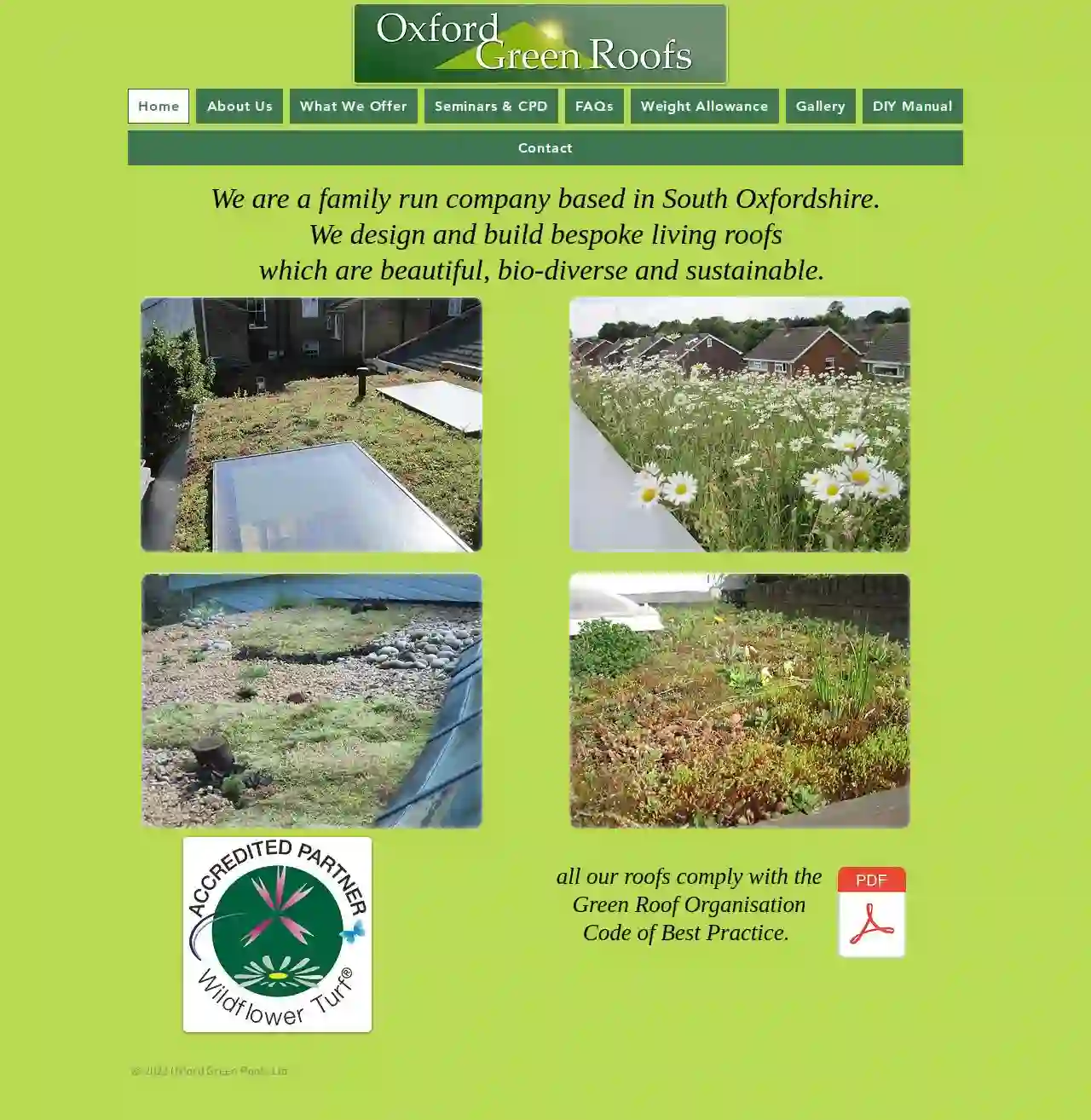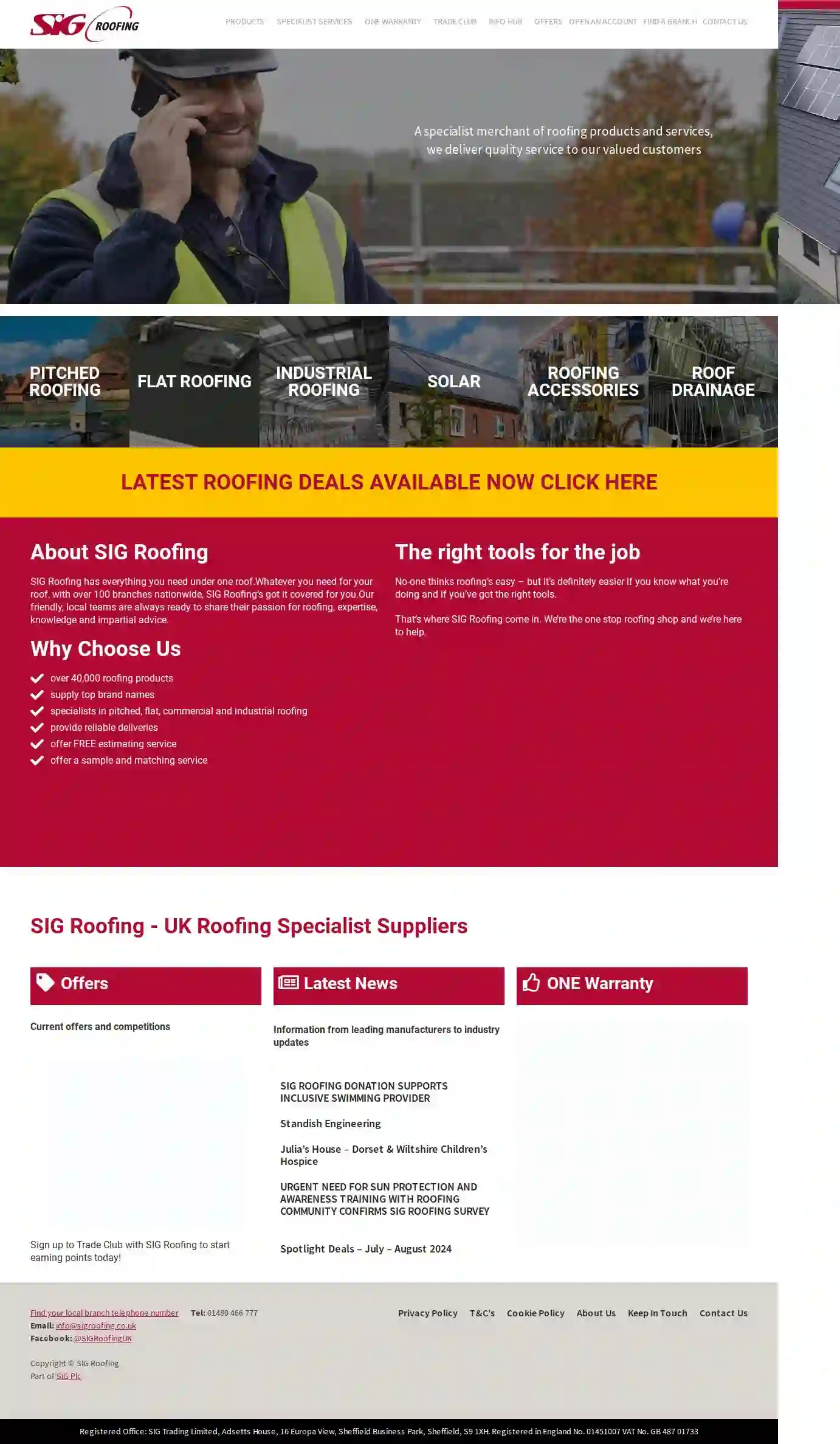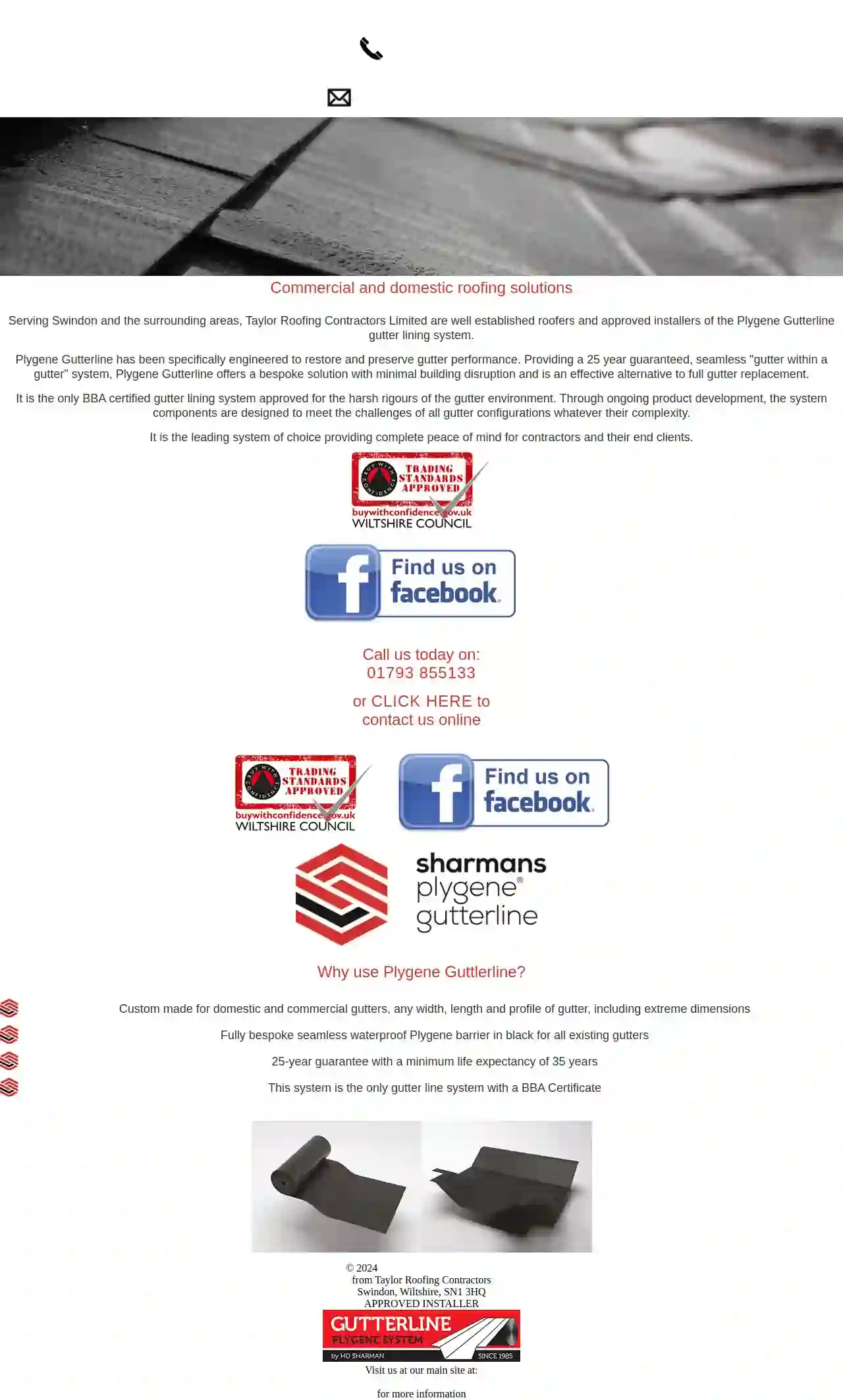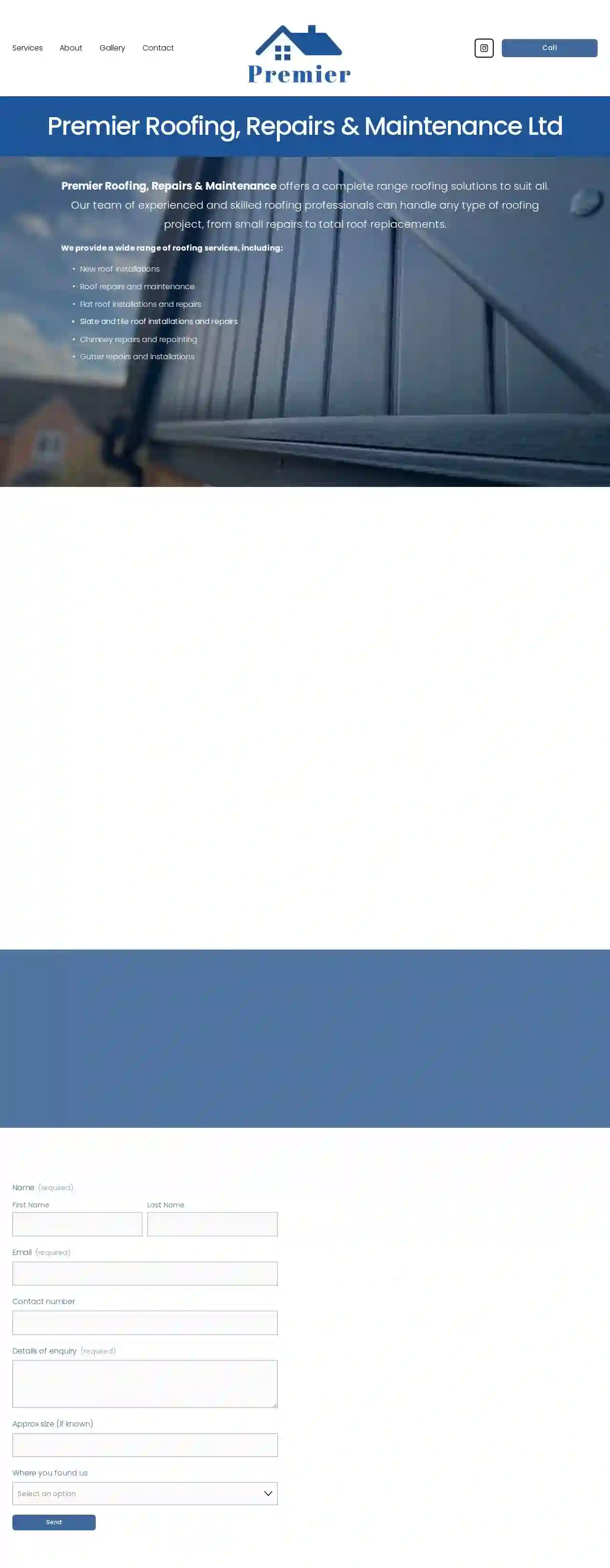Roofing Companies Hungerford
Find the best Roofers in Hungerford
Receive 3 FREE Roofing Companies quotes for your project today! Compare profiles, reviews, accreditations, portfolio, etc... and choose the best offer.

Thames Side Roofing and Building ltd
94 London Road, Headington, OX3 9FN, GBThames Side Roofing & Building Ltd is a family-run roofing company with over 25 years of experience. We offer a wide range of roofing services to both home and business owners in Oxfordshire and surrounding areas. Our team of highly skilled roofers is dedicated to providing high-quality workmanship at competitive prices. We are proud to be Checkatrade and Approved Roofers accredited, and we have a reputation for excellent customer service. We use only the best quality roofing materials to ensure that our work is built to last. Our services include new roof installations, flat roof repairs, chimney and leadwork repairs, roof cleaning, guttering, and more. We offer free site visits and quotes, and we are always happy to answer any questions you may have.
- Services
- Why Us?
- Accreditations
- Gallery
Get Quote
Oxford Green Roofs Ltd
51 reviewsGBWe are a family run company based in South Oxfordshire. We design and build bespoke living roofs which are beautiful, bio-diverse and sustainable. all our roofs comply with the Green Roof Organisation Code of Best Practice. © 2023 Oxford Green Roofs Ltd.
- Services
- Why Us?
- Gallery
Get Quote
JRB Roofing Services
Swindon, GBJRB Roofing Services Swindon is a well-established and reputable roofing company based in Swindon, UK. We provide a wide range of roofing services to both domestic and commercial customers, including new roofs, flat roof repairs, chimney repairs, roof repairs, UPVC soffits and facias, and dry verge systems. Our team of experienced and skilled roofers are dedicated to providing first-class roofing solutions with 5-star customer ratings. We offer a free consultation service and guarantee all our work. Our after-care service ensures that your roof remains in great condition for many years to come.
- Services
- Why Us?
- Accreditations
- Our Team
- Testimonials
- Gallery
Get Quote
Roofbase Swindon
4.511 reviewsUnit 11 Newcombe Drive, Hawksworth Industrial Estate, Swindon, SN2 1EA, GBWelcome to Roofbase Swindon, your local roofing merchant! Our branch is conveniently located in Swindon, serving both trade professionals and the general public. We pride ourselves on having extensive stock readily available, which can be delivered and offloaded on site by our fleet of vehicles. Our wide product range rivals any national merchant, but we never compromise on the personal customer service you deserve. You'll find everything you need for your roofing construction and maintenance projects at Roofbase. Our team of experienced professionals is dedicated to providing you with first-class service and expert advice every time you visit. We're committed to helping you find the right solutions for your roofing needs. We look forward to welcoming you to our store! General Manager Angus Wilson
- Services
- Why Us?
- Our Team
- Gallery
Get Quote
SIG Roofing Oxford
4.121 reviewsOxford, GBSIG Roofing is a specialist merchant of roofing products and services, delivering quality service to our valued customers. Established for over 40 years – with branches throughout the UK from Inverness to Plymouth. We have everything you need under one roof. Whatever you need for your roof, with over 100 branches nationwide, SIG Roofing’s got it covered for you. Our friendly, local teams are always ready to share their passion for roofing, expertise, knowledge and impartial advice.
- Services
- Why Us?
- Gallery
Get Quote
Woodstock Roofing
4.830 reviewsElmsfield Industrial Estate, Units 1 & 2, Chipping Norton, OX7 5XL, GBWoodstock Roofing is a family-run business that has been providing quality roofing services in Oxfordshire and surrounding counties since 1963. We offer comprehensive roofing services and a diverse range of products to commercial and residential clients throughout Oxfordshire, Warwickshire, Gloucestershire, Buckinghamshire, and the Cotswolds. Our expert roofers can install, replace, repair, and maintain flat and pitched roofs, slates, or tiles. We are accredited with Oxfordshire Trading Standards, Safe Contractor, Worksafe Contractor, and NFRC logo.
- Services
- Why Us?
- Accreditations
- Gallery
Get Quote
Roofersswindon.co.uk
51 reviewsSwindon, Wiltshire, SN1 3HQ, GBServing Swindon and the surrounding areas, Taylor Roofing Contractors Limited are well established roofers and approved installers of the Plygene Gutterline gutter lining system. Plygene Gutterline has been specifically engineered to restore and preserve gutter performance. Providing a 25 year guaranteed, seamless "gutter within a gutter" system, Plygene Gutterline offers a bespoke solution with minimal building disruption and is an effective alternative to full gutter replacement. It is the only BBA certified gutter lining system approved for the harsh rigours of the gutter environment. Through ongoing product development, the system components are designed to meet the challenges of all gutter configurations whatever their complexity. It is the leading system of choice providing complete peace of mind for contractors and their end clients. Call us today on: 01793 855133 or CLICK HERE to contact us online
- Services
- Why Us?
- Gallery
Get Quote
Premier Roofing, Repairs & Maintenance Ltd
57 reviewsOld London Road, Unit 33, M40 Offices, Oxford, OX33 1WX, GBPremier Roofing, Repairs & Maintenance Ltd is a new company with old roots, established by a long standing employee of our sister company Premier Roofing, Guttering & Driveways Limited. The new company has been created to fulfill the demand that Oxfordshire & Berkshire presents.Premier Roofing, Repairs & Maintenance Ltd is slightly different in respects that we will strive to concentrate on the quick repairs, the location and prevention of leaks, while still prioritising the maintenance of roofs and guttering.
- Services
- Why Us?
- Accreditations
- Our Team
- Testimonials
- Gallery
Get Quote
Scrivener Roofing Swindon
56 reviewsGBScrivener Roofing - Swindon Roofing Company Specialists in providing high quality roofing installations for residential, commercial and industrial clients throughout Swindon and Wiltshire. We specialise in all aspects of roofing services, including: New Roofs Roofing Repairs Flat Roofs Skylights / Velux Windows Chimneys Lead Work WaterProofing Garage Roofs Cladding, Fascias and Soffits Roof Insulation Rubber / EPDM Roofing Green Roofs Our Roofing Services Pitched Roofs Flat Roofs Tiled Roofs Chimneys Slate Roofs Roof Repairs Lead Work Skylights / Velux Windows 10+ Years In Business 50+ New Roofs per year 100+ Roof Repairs per year 200+ Happy Customers per year Quality Assured Providing a high quality service is paramount to our success which is why all of our roofs and repairs come with a guarantee. Our Reviews "Simon and his team did a fantastic job and I wouldn't hesitate to use them again in the future" "Extremely impressed with the service and overall high quality of completed work. Simon and his team kept me fully informed at every stage of the work and this was extremely reassuring" "Excellent service and work completed to a very high standard. Very happy with all the work carried out and I would highly recommend" "Very professional company, replaced my garage roof after a bodged job from a previous roofer. I Highly recommend Simon and his team... Very competitively priced too." If you'd like to see more previous customer reviews please see our here: Swindon Roofing Reviews Page 10 / 10 Areas covered by Scrivener Roofing We carry out new roof installations and roofing repairs across Swindon and Wiltshire. We have highly skilled roofers located across Wiltshire and surrounding areas including: Swindon Marlborough Cirencester Lechlade Highworth Cricklade Request a quote Please complete the form below and we will contact you or alternatively give Simon a call for a quote: 07464704417 [email protected] Submit Simon Scrivener Simon and his team at Scrivener Roofing are your local Swindon roofing professionals who specialise in helping home owners and businesses with their roofing needs. Formerly a member of the Army Parachute regiment, Simon has always been comfortable at heights. The discipline and attention to detail instilled by the Army have served him well in his business. With over 10 years roofing experience and with almost one hundred "Checkatrade" 10/10 reviews for his workmanship/customer care, Simon and his team really respect the craft and their customers. Meet The Team Joe Troy Harry Darcy
- Services
- Why Us?
- Accreditations
- Our Team
- Testimonials
- Gallery
Get Quote
M.b roofing contracts
72 Vigo Road, Andover, SP10 1HT, GBM.B Roofing Contracts is a professional pitched roofing specialist serving Andover and the surrounding areas for many years. We are fully compliant with 'roofing codes of practice' in our specialist areas, including regulations like Tile and slating BS5534 reg- code and revisions. We understand that many older roofs in our area have suffered from recent strong winds (like Storm Eunice in late February 2022) and current weather conditions. Tile/slate uplift, tile chatter, nail erosion, and redundant mortar followed by liner ballooning can cause failures. That's why we specialize in solving smaller roof failures early. We also repair and maintain fragile older plain concrete and plain clay peg tiled surfaces. We offer a wide range of services, including: * Access equipment * Fascia & soffit installation * General roof repairs * Guttering and associated services * House re roofs, steel and tiled * Listed building roof services * Plain tiled roofs * Proactive repairs * Quotations * Roof liners replaced * Roofing/ Labour labour * Slate roof repairs We also carry a large range of new and discontinued tiles, slates, and roofing materials. Our services extend to: * Verge undercloaking renewals upgraded to current regulations * Guttering, fascia and soffit renewals and maintenance * Domestic upvc guttering repaired or replaced * Gutter debris removal * Rain water pipes unblocked * Wire balloons fitted for subterranean serviced rain water * Slate and tile hip and valley repairs * All lead works * All profiles of roof vents fitted for adequate air flow * Quilted insulation installation in the attic space to prevent heat loss and condensation We are fully insured and knowledgeable in the listing process, including works carried out in areas of natural beauty and conservation areas. We are committed to working safely and complying with all relevant health and safety regulations, including the Working at Height Regulations 2005 (WAHR 2005). We provide unique method statements and risk assessments upon request. M.B Roofing Contracts is a family-run business with a hands-on approach. The proprietor, Michael, has over 30 years of experience in the roofing industry, working on a variety of projects, from domestic tiled roofing renewals to industrial and agricultural clad roofing. He is passionate about providing a professional and reliable service to all our customers.
- Services
- Why Us?
- Accreditations
- Our Team
- Gallery
Get Quote
Over 12,314+ Roofing Contractors in our network
Our roofing pros operate in Hungerford & surrounding areas!
Roofyng.co.uk has curated and vetted Top Roofers in and around Hungerford. Find the most reliable pro today.
Frequently Asked Questions About Roofing Companies
- Experience: Companies with a solid track record and years of experience in the industry.
- Licensing and Insurance: Verify they are properly licensed to operate in your area and carry adequate insurance to protect you from liability.
- Certifications: Look for certifications from reputable organizations, demonstrating expertise in specific roofing materials or techniques.
- Positive Reviews: Check online reviews and testimonials from previous customers.
- Professionalism: Choose a company that communicates clearly, provides detailed estimates, and has a courteous and responsive team.
- Choose Reflective Roofing Materials: Opt for light-colored shingles or metal roofing that reflects sunlight and reduces heat absorption.
- Install Proper Attic Insulation: Adequate insulation prevents heat loss in the winter and heat gain in the summer.
- Ensure Adequate Ventilation: Proper attic ventilation allows hot air to escape, reducing cooling costs and extending the lifespan of your roof.
- Consider a Radiant Barrier: In hot climates, a radiant barrier installed in the attic can reflect heat away from the roof, further reducing cooling needs.
- Regular Inspections: Inspect your roof at least twice a year for signs of damage or wear and tear.
- Gutter Cleaning: Clean gutters and downspouts regularly to prevent clogs and ensure proper drainage.
- Tree Trimming: Trim overhanging branches to avoid damage from falling debris and reduce shade, preventing moss growth.
- Proper Ventilation: Ensure good attic ventilation to regulate temperature and moisture.
- Timely Repairs: Address any damage promptly to prevent escalation.
- Hot Climates: Opt for light-colored or reflective roofing materials to reduce heat absorption. Consider tile roofs for their thermal mass and heat resistance.
- Cold Climates: Ensure your roof has adequate insulation and ventilation to prevent ice dams and moisture buildup. Metal roofs can shed snow effectively.
- High-Wind Areas: Choose roofing systems with high wind ratings and properly installed hurricane straps or clips to enhance wind resistance.
- Areas with Heavy Rainfall: Ensure your roof has proper drainage and a waterproof membrane to prevent leaks.
How do I find a good roofing company?
How can I make my new roof more energy-efficient?
How do I prevent roof damage?
How do I choose the right type of roof for my climate?
How do I find a good roofing company?
- Experience: Companies with a solid track record and years of experience in the industry.
- Licensing and Insurance: Verify they are properly licensed to operate in your area and carry adequate insurance to protect you from liability.
- Certifications: Look for certifications from reputable organizations, demonstrating expertise in specific roofing materials or techniques.
- Positive Reviews: Check online reviews and testimonials from previous customers.
- Professionalism: Choose a company that communicates clearly, provides detailed estimates, and has a courteous and responsive team.
How can I make my new roof more energy-efficient?
- Choose Reflective Roofing Materials: Opt for light-colored shingles or metal roofing that reflects sunlight and reduces heat absorption.
- Install Proper Attic Insulation: Adequate insulation prevents heat loss in the winter and heat gain in the summer.
- Ensure Adequate Ventilation: Proper attic ventilation allows hot air to escape, reducing cooling costs and extending the lifespan of your roof.
- Consider a Radiant Barrier: In hot climates, a radiant barrier installed in the attic can reflect heat away from the roof, further reducing cooling needs.
How do I prevent roof damage?
- Regular Inspections: Inspect your roof at least twice a year for signs of damage or wear and tear.
- Gutter Cleaning: Clean gutters and downspouts regularly to prevent clogs and ensure proper drainage.
- Tree Trimming: Trim overhanging branches to avoid damage from falling debris and reduce shade, preventing moss growth.
- Proper Ventilation: Ensure good attic ventilation to regulate temperature and moisture.
- Timely Repairs: Address any damage promptly to prevent escalation.
How do I choose the right type of roof for my climate?
- Hot Climates: Opt for light-colored or reflective roofing materials to reduce heat absorption. Consider tile roofs for their thermal mass and heat resistance.
- Cold Climates: Ensure your roof has adequate insulation and ventilation to prevent ice dams and moisture buildup. Metal roofs can shed snow effectively.
- High-Wind Areas: Choose roofing systems with high wind ratings and properly installed hurricane straps or clips to enhance wind resistance.
- Areas with Heavy Rainfall: Ensure your roof has proper drainage and a waterproof membrane to prevent leaks.